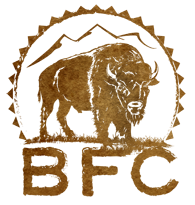For Immediate Release:
April 18, 2023
Contacts:
Tom Woodbury, Communications Director, Buffalo Field Campaign
This email address is being protected from spambots. You need JavaScript enabled to view it.
(650) 238-8759 (personal/preferred)
Darrell Geist, Habitat Coordinator, Buffalo Field Campaign
This email address is being protected from spambots. You need JavaScript enabled to view it.
(406) 531-9284
West Yellowstone, MT - According to wildlife biologist Jackson Doyel, with the Buffalo Field Campaign, after accounting for the hundreds of bison that surely died naturally in Yellowstone National Park during this unusually harsh winter, the total population of Yellowstone Bison will likely be reduced by a full third this season, down from 6,000 to about 4,000. “This is a clear and present threat to the genetic integrity of wild bison,” Doyel said. “Bison need to be listed as threatened now,” said Doyel “to avoid a repeat of this unsustainable removal next winter.”
This year’s precipitous decline in the total population of Yellowstone Bison, which has garnered national attention, happens to come in the midst of a “threats analysis” being conducted to determine whether those bison deserve the protections afforded by the Endangered Species Act. Buffalo Field Campaign, a leading bison advocacy group with 25 years of experience in the field with the iconic species, is calling on Secretary of Interior Deb Haaland to expedite the listing of bison now to avoid further endangering our National Mammal.
“We cannot afford another winter like this one,” said BFC co-founder and Campaign Coordinator Mike Mease. Mease pointed out that there are two genetically distinct herds of wild bison in Yellowstone, which is what forced the U.S. Fish & Wildlife Agency to undertake the threats analysis. “One of those two herds only has about a thousand members,” Mease said. That’s well below minimum viability for a herd, according to accepted science.
Fifty years ago, Congress enacted the Endangered Species Act to recognize the importance of protecting endangered and threatened species, citing their “esthetic, ecological, educational, historical, recreational and scientific value to the Nation and its people.” The Department of Interior, in an order issued by Secretary Deb Haaland last month, recognize wild bison as “functionally extinct to both grassland systems and the human cultures with which they coevolved.”
Advocates want Haaland to take the final determination of Yellowstone Bison’s status out of the hands of her Fish & Wildlife Agency’s Director, Martha Williams, who wildlife scientists say lacks the “scientific education and experience” required for her position by law, prompting calls for her removal. A federal judge, in the case of BFC v. Williams (2022), has already faulted the agency for refusing to apply the best available science, under Williams direction, when it arbitrarily rejected BFC’s petition for listing Yellowstone Bison under the Endangered Species Act. BFC wants science, and not politics, to determine the fate of Yellowstone’s wild bison after this year’s grievous toll.
BFC is sponsoring an online petition to Secretary Haaland to list Yellowstone Bison under the ESA: https://www.change.org/p/debra-a-haaland-support-endangered-species-act-protection-for-yellowstone-s-wild-bison-herds
A New Path Forward
BFC refers to the present mismanagement of Yellowstone Bison as the ‘tragedy of the buffalo commons,’ creating an untenable situation where too few bison are available to Tribes on too little habitat. “We need to honor, protect and restore Yellowstone bison where they are now extinct because of the failure of the State of Montana to provide for a self-sustaining population in the wild,” said BFC’s Habitat Coordinator, Darrell Geist. “Endangered Species Act protection can break the stranglehold Montana has placed on recovering wild bison in the Yellowstone ecosystem,” Geist added.
BFC’s mission is to protect the natural habitat of wild, free-roaming buffalo and other native wildlife; and work with all people—especially Indigenous Nations—to honor and protect the sacredness of the wild buffalo. The 25-year old organization was co-founded by Rosalie Little Thunder, and is currently led by Tribal scientist James Holt, who cites the success of his Tribe, the Nimipoo or Nez Perce, in resurrecting a nearly extinct species of salmon in the Columbia River basin. "In the realm of endangered salmon and treaty fisheries, there are constant, in-season discussions taking place,” Holt said. “Tribes have matured in their technical capacity, and are able to effectively co-manage salmon alongside other sovereigns to ensure ecosystem-based goals are achieved in real time,” Holt said.
BFC is advocating for the inclusion of Tribes with treaty rights, aboriginal, ancestral, and spiritual ties to Yellowstone bison to have a leadership role in developing and implementing conservation plans to restore the natural range of Yellowstone bison, allowing for increasing herd sizes that will provide resiliency for the population’s persistence in the wild in the face of ongoing threats, such as rapid climate change. Listing of the bison as threatened or endangered would mean that the Fish and Wildlife Service would have to approve any Tribal harvests or conservation transfers, while at the same time empowering Tribes to expand bison habitat into the Greater Yellowstone Ecosystem and manage for an increasing population.
For more information on the threats to Yellowstone Bison, visit their web page on bison migration and endangerment to their genetic integrity:
https://www.buffalofieldcampaign.org/endangered-bison-endangered-migration
“I look forward to Tribes elevating their capacity for wild Yellowstone buffalo in the same way we have for salmon,” Holt said. “We cannot have a repeat of this year's poorly-managed, uncoordinated hunt,” Holt maintains. “Everyone, including Tribes, must do better. Buffalo deserve a voice of reason at the table,” he concluded.
Montana’s Unlawful Interference With Tribal Hunting
Buffalo Field Campaign’s Communication Director, Tom Woodbury, points out that the law and public sentiment is on the side of restoring balance in the ecology that includes free-roaming wild bison and Tribal management. “There is zero scientific rationale for treating migrating bison any different than migrating elk or antelope,” Woodbury maintained.
Recent rulings from the U.S. Supreme Court recognizing the primacy of off-reservation Tribal treaty hunting rights calls into question Montana’s continuing insistence on severely restricting the natural migrations of Yellowstone’s buffalo into the Greater Yellowstone Ecosystem. Specifically, the Court in 2019 ruled that Treaty Tribes retain a “virtually unqualified right” to hunt on National Forest lands. See: Herrera v. Wyoming. The Court reinforced an earlier decision finding that a Tribes’ exercise of off-reservation hunting and fishing rights, which are considered to the supreme law of the land under Article Six of the U.S. Constitution, is “immune” from State regulation. See: 443 U.S. 658, at 682 (1979).
The only permissible grounds for a state interference with Tribal treaty rights (p. 770), according to the Supreme Court, is where the state can show that its actions are necessary to conserve the species. The State of Montana has never expressed any interest in even acknowledging wild bison as wildlife, let alone conserving them. Its outdated expression of intolerance towards the presence of wild bison throughout the Custer-Gallatin National Forest appears to be contrary to Supreme Court edicts in Herrera, which involved tribal hunting on the Bighorn National Forest, and related cases.
According to Woodbury, “It is only a matter of time before the State of Montana’s anti-wildlife stance is struck down as unlawful.








